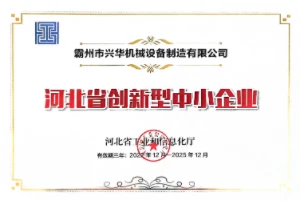Innovative Techniques for Roll Forming Seamers in Modern Manufacturing Processes
Understanding the Roll Former Seamer An Essential Tool in Metal Fabrication
In modern metal fabrication, efficiency and precision are critical to producing high-quality products. One of the most vital tools in this process is the roll former seamer, which serves to enhance productivity and automate the seaming process in various applications, such as roofing, siding, and metal building components. This article explores the functionality, design, and advantages of roll former seamers in the metalworking industry, illustrating their importance in contemporary manufacturing.
What is a Roll Former Seamer?
A roll former seamer is a mechanical apparatus used primarily in the roll forming process to join metal sheets or panels by folding their edges together. This technique provides a durable and weather-resistant seal, which is especially important in applications like roofing systems where exposure to the elements is a concern. The roll former seamer typically operates in conjunction with a roll forming machine, which shapes the metal sheets into the desired profile through a series of rollers.
The Mechanics of Roll Forming
The roll forming process involves feeding flat metal sheets, often made of steel or aluminum, through a series of rollers that gradually bend and shape the material into a specific profile. Each roller applies pressure to the sheet at precise angles to achieve the desired contour without sacrificing the material's structural integrity. Once the metal sheet is shaped, the roll former seamer comes into play, creating seams by folding or crimping the edges of adjoining sheets.
Types of Roll Former Seamers
Roll former seamers come in various designs to accommodate different applications and material types. Some common types include
1. Stand-alone Seamers These machines are dedicated to seaming and can handle both straight and curved seams. They are often used in facilities that require a high volume of seamed materials. 2. Integrated Seamers These machines are built into roll forming lines, providing an all-in-one solution that streamlines the production process. They reduce handling time and increase efficiency by combining forming and seaming steps.
roll former seamer

3. Portable Seamers Designed for on-site applications, portable seamers are used in situations where materials cannot be easily transported to a factory. They offer flexibility and can be utilized for various seaming tasks in construction and repair.
Advantages of the Roll Former Seamer
The integration of roll former seamers into the fabrication workflow offers several advantages
1. Efficiency By automating the seaming process, manufacturers can significantly reduce labor costs and production times. Seamers allow for continuous operation, enabling large volumes of work to be completed more quickly than manual methods.
2. Precision Roll former seamers are engineered for precision, ensuring that seams are consistent and fit accurately. This consistency not only improves the aesthetic quality of the final product but also enhances its functional performance, particularly in terms of waterproofing and structural strength.
3. Versatility With the ability to work with a variety of materials and profiles, roll former seamers can be adapted to a wide range of applications. Whether in construction, automotive, or manufacturing sectors, seamers provide the flexibility required to meet diverse project requirements.
4. Reduced Waste The accuracy of seamers minimizes material waste, contributing to more sustainable manufacturing practices. By achieving precise cuts and folds, less metal is scrapped or returned for rework.
Conclusion
The roll former seamer plays a crucial role in the metal fabrication landscape, enhancing both efficiency and quality in the production of metal components. As industries continue to demand higher standards of performance and sustainability, the importance of advanced machinery like roll former seamers cannot be overstated. Investing in these systems not only improves operational capacities but also positions manufacturers to meet the challenges of an ever-evolving market. In conclusion, understanding and utilizing roll former seamers is essential for any company looking to advance its metal fabrication processes.
-
High Frequency Straight Seam Welded Pipe Production Line-BzZhou Xinghua Machinery Equipment Manufacturing Co., LTD.|line pipe steel&welded gas pipeNewsJul.30,2025
-
High Frequency Straight Seam Welded Pipe Production Line-BzZhou Xinghua Machinery Equipment Manufacturing Co., LTD.|High Precision&Automated SolutionsNewsJul.30,2025
-
High Frequency Straight Seam Welded Pipe Production Line - BzZhou Xinghua Machinery Equipment Manufacturing Co., Ltd.NewsJul.30,2025
-
High Frequency Straight Seam Welded Pipe Production Line-BzZhou Xinghua Machinery Equipment Manufacturing Co., LTD.|Precision Welding, High EfficiencyNewsJul.30,2025
-
High Frequency Straight Seam Welded Pipe Production Line|BzZhou Xinghua|Precision Welding&EfficiencyNewsJul.30,2025
-
High Frequency Straight Seam Welded Pipe Production Line - BzZhou Xinghua|Precision Engineering&EfficiencyNewsJul.30,2025


